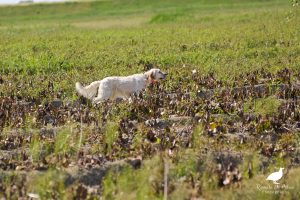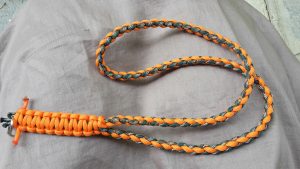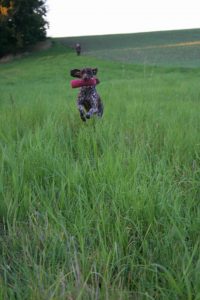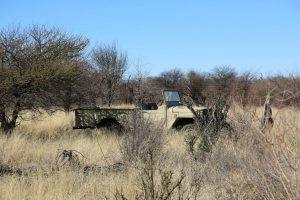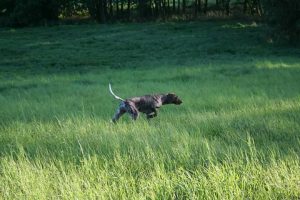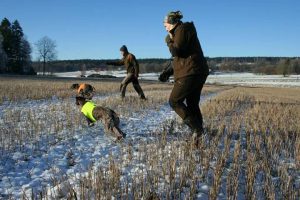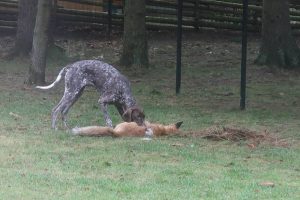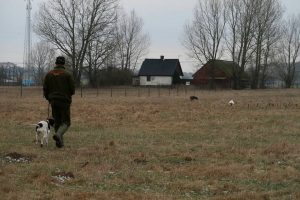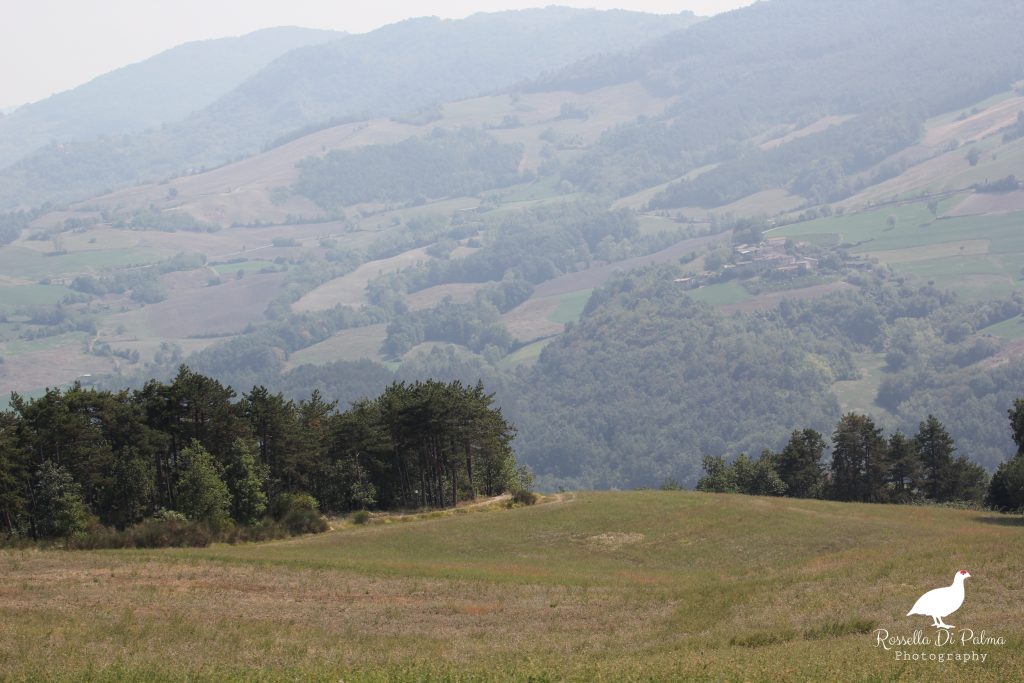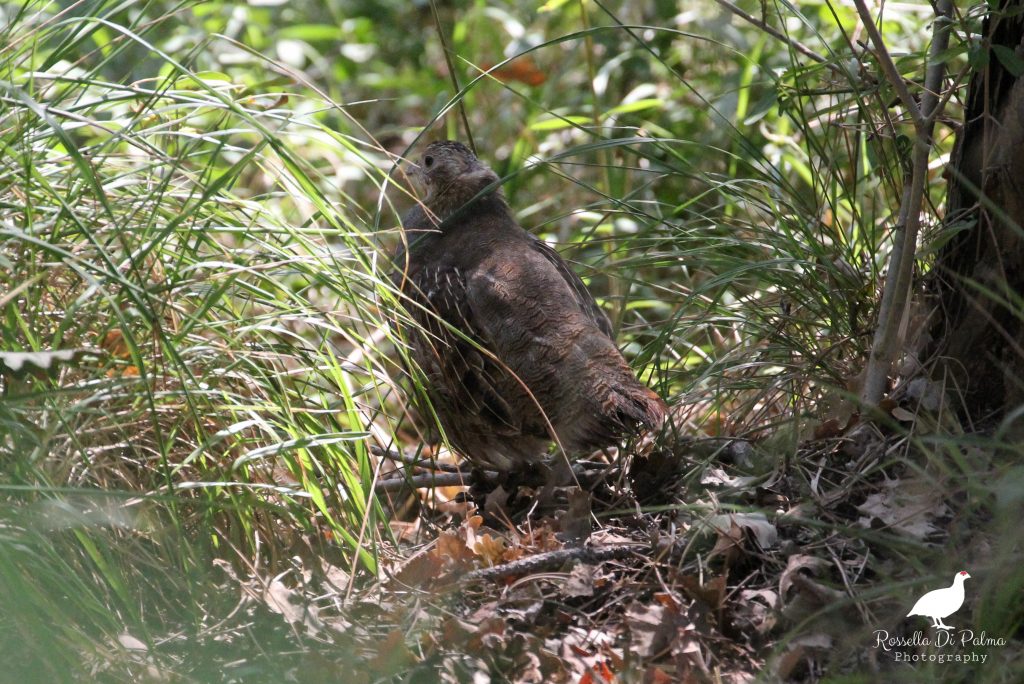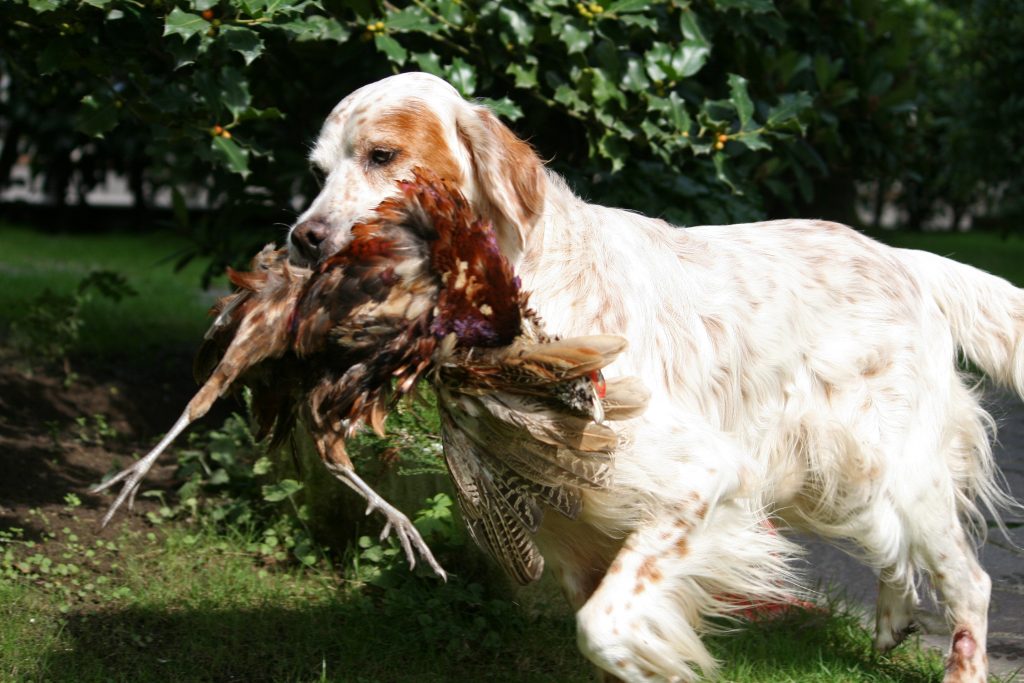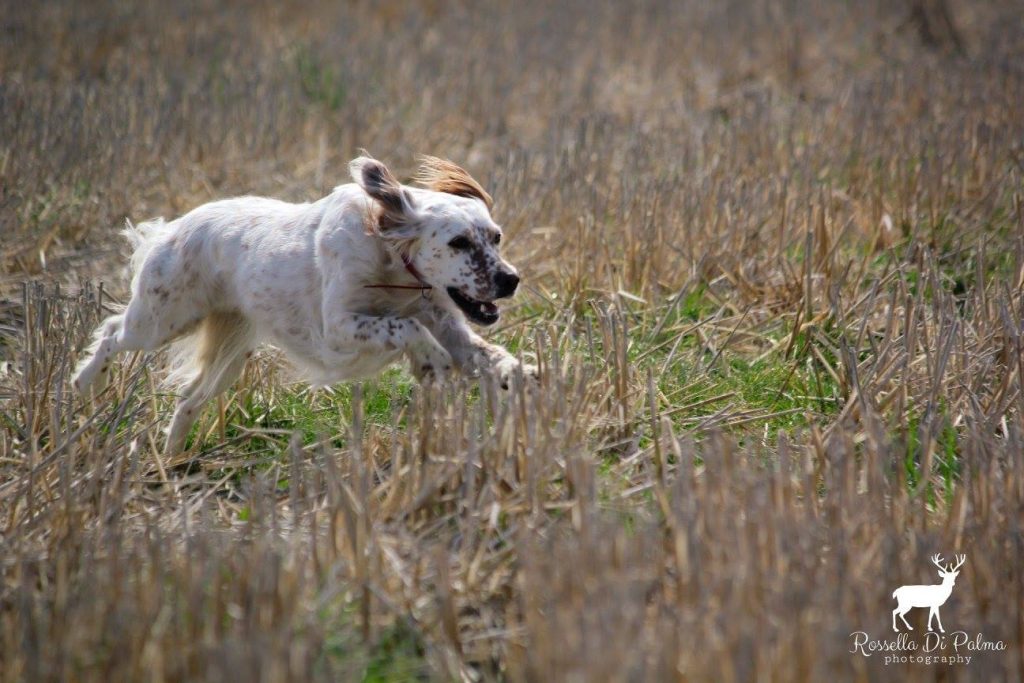Tok Mostert, a Professional Hunter from South Africa, now living in Sweden, is sharing his writings on dog training with us. You can start reading them from Part 1 here.
We are Losing Legendary Methods (Obedience and Discipline) – By T. Mostert
This is purely my opinion, what I believe and have experienced, there are many other opinions and beliefs when it comes to training obedience. Clickers, treats, positive conditioning, e-collars, positive – negative training, in the end there are as many methods as there are dog breeds. Everyone sells their method as the gospel, as the only way to train a dog. Then you have the other side of the coin where trainers believe the dog should be as raw as possible, sticking close to his instinct and breeding as possible, with little human interference.
Now I can tell you that the best bird finding dog I have ever seen is a English Pointer that had non existing obedience, the only time the dog would stand still was when pointing, he was wild!
Blood trackers do not care if the dog pulls or pushes, as long as he is tracking and finding game, no recall or stop signals are needed because the dog is restrained all the time.
Unfortunately, if you have a HPR dog and you will use it in all the disciplines he was bred for, you cannot afford to have little, or no obedience. You may get away with it competing in young dog classes, but you will never, I repeat, never make it to the top 10% of elite dogs without proper obedience. To be at the top of every discipline consistently, you need a dog to listen and obey commands. To have a dog hunt in areas with main roads and rail tracks, you need obedience; to ensure your dog does not go after game you may not hunt, you need obedience and discipline. In short if nothing else to keep your dog from getting hurt or killed you need obedience.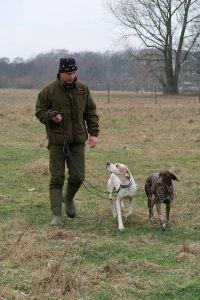
As said before, I spent many, many, hours with Jeppe Stridh and I believe in his methods. My own conclusions run parallel to his training and the 95% – 5% rule (praise- correction ratio) is what I stick to, in all my training, not just obedience. As Jeppe clearly states, dogs see a red or green light, there is no amber warning light for them, it is yes or no, keep it simple. A leash is a restraint, when you start training a leash is a great tool but, unless the dog learns that you are a mental and physical leash right out to beyond where the dog can see, you will never have full control. Your ” presence” needs to extend to the limit of where you are willing to let the dog go, this is also the limit at where you should work the dog! If you cannot control the dog at 20 meters off leash why, why try and control it at 300 meters? You are simply allowing the dog to say fuck you!
Mistakes, or inappropriate behaviour, shall be corrected immediately and swiftly, is everything. Do not hang over the dog or extend the corrections, it places more pressure on them and has more negative effect than correction attributes. Also once the correction is done, give the dog space, take a step sideways away from the dog. He will close that gap up by himself, which is exactly what you want! Always, always be friendly with the dog right after any corrections, always!
I have a problem and I have had it for a while, I am working on it and I try to keep it in mind everyday. I want to keep touching Flake to reassure her and calm her down, it is wrong. Your voice ,attitude and general body language should be enough to do all of these things, save the touching and stroking for when you are not training (you are always training, I know).
Flake was a unsure puppy and needed more encouragement than most other dogs. Lucky we got over that quickly, but the touching habit has not been broken by me. A dog is low, or insecure, when his tail is tucked, ears and whole demeanor are low, won’t look you in the eyes, keeps exposing his stomach to you and follows behind you. Then you need to be extremely careful and give him all the support you can. Opposed to that, is the strong bullhead dog that needs progressively harder correction until they toe the line.
It is all a balance, fine adjustments in voice, movements and commands both positive and negative should be made all the time, until you find what is best for you and your dog. Repeated useless corrections are only going to make things harder for both you and the dog. When the dog does something right, praise him immediately and excessively, once he understands, tone the praise down bit by bit until a simple click of the your tongue is all the praise the dog needs, I don’t even do that anymore a simple nod, and silent good dog is all she needs to acknowledge me and know that she did well.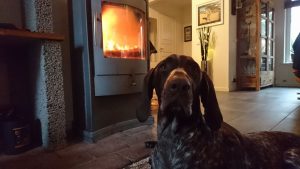
I get asked how often I train discipline and obedience My answer is always the same ,I don not train it I live it, it never stops. Feed the dog, sit, stay, okay you can eat now. Door open dog still waits for a command to indicate it’s okay to go out, finished outside door still open, dog sits and waits for my command to say she can come in. Open her crate in the back of the car, she waits for a command to get in, same for when she gets out. It is a never ending process. Why? The dog keeps evolving, new experiences, new places,new faces and hormones as they age, but they need to understand the same rules always apply.
Now for a crucial part that relates directly to field work and obedience. It is a contradiction, but a vital part of turning a well trained HPR into a bird machine! You cannot have a good field dog if you have too much discipline! The two do not go hand in hand! It is no use having a remote operated dog that will only do what you tell it to do on a field, for a dog to find birds it has to rely on its senses and experience, not on the handler. Here and only here do you need to back off on the obedience! Your dog needs freedom to make the correct choices and gain experience.
Example 1:
Trainer and dog arrive at a field test. Dog has no leash from the moment he gets let out of the vechile. Trainer and dog follow after the pairs being released, dog is never more than a arm length away from the trainer, never. Time comes for the pair to run their beat on the field. Dog is released/sent out to work the field, runs left 50 meters, switches, runs right 50 meters switches, goes out 30 meters, cuts back to pass a meter from the trainer. This continues for 5 minutes, until the dog is maybe 70 meters deep and 50 meters wide, dog stops looks back at the trainer and waits for a command. Same scenario plays out the whole 15 minute beat, often accompanied by the trainer blowing on the whistle every minute. This dog is focused on getting it right, it is getting it all wrong!
Example 2:
Trainer arrives at a field test, gets out of the vehicle with a leash, is forcing the door open, but also blocking it at the same time until he can slip the leash on the dog. From there he is a weight being dragged after the dog until he and his dog have a beat to run. Leash off dog runs up down, left right finds a hare and 4 hours later the retainer still has not managed to get hold of the dog. This despite blowing himself blue in the face for at least 2 hours on a whistle that has never worked on the dog.
They may be two extreme examples, but they are real examples of both too much and too little obedience and both end the same way, no birds no score.
There is so much more I want to write on this topic, but it is better to find a Legend and train with him.
While testing dogs may be hard, hunting with them is going to multiply any lack of or excess of obedience. No matter how much of a simulation you do while training, it is nothing compared to the real thing. I have picked up more mistakes under high pressure hunting situations than I ever will simply training, if your HPR is just going to do the circuit of trails you have it easy. If however you are going to use the true potential of the dog and take yourself and your HPR to the limit of your and their abilities, make sure you have a solid foundation in obedience and discipline. You cannot let go something you never had, you can only let something go if you have it, simple rule for obedience and discipline.
More on fieldwork here.
